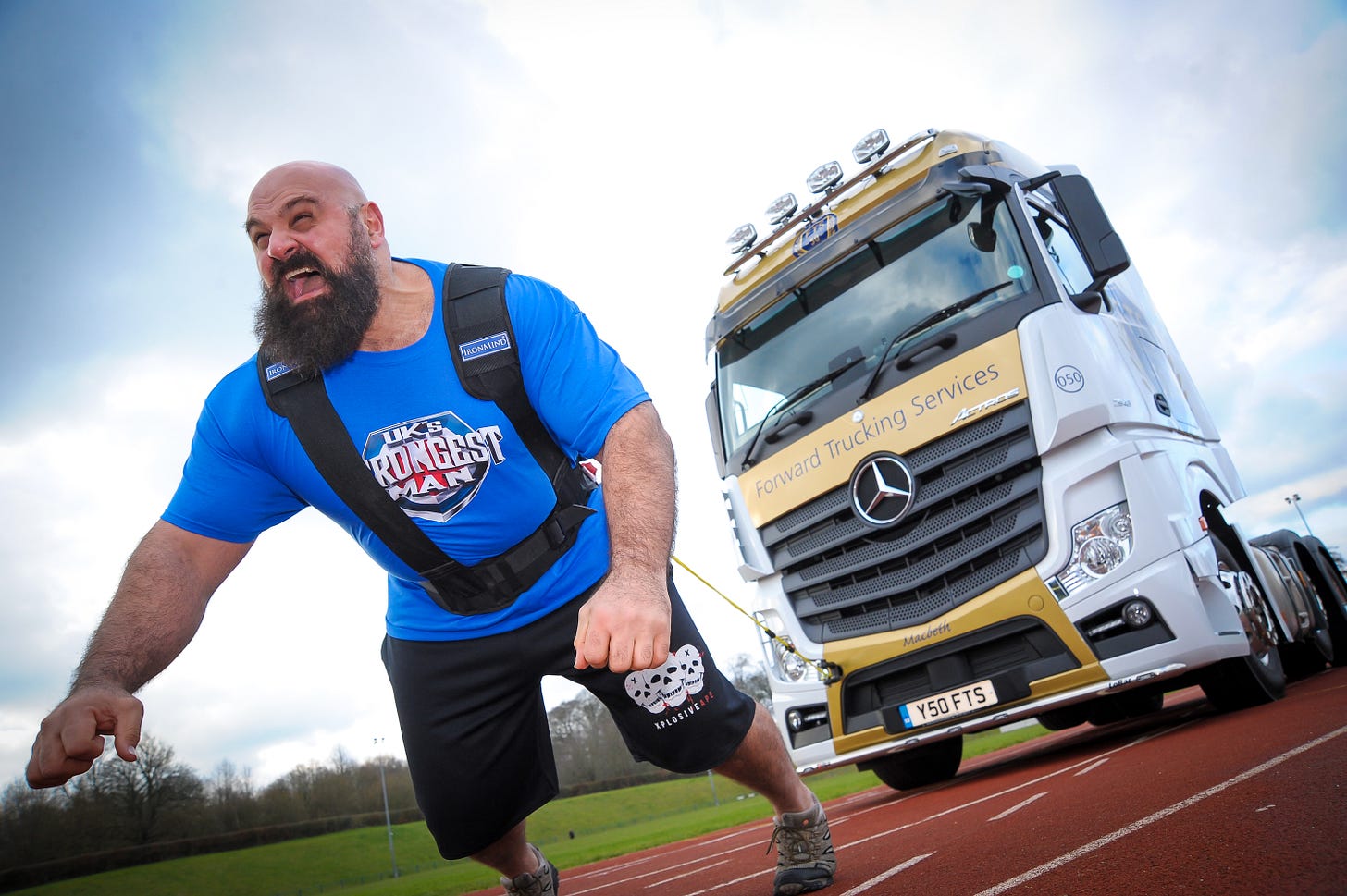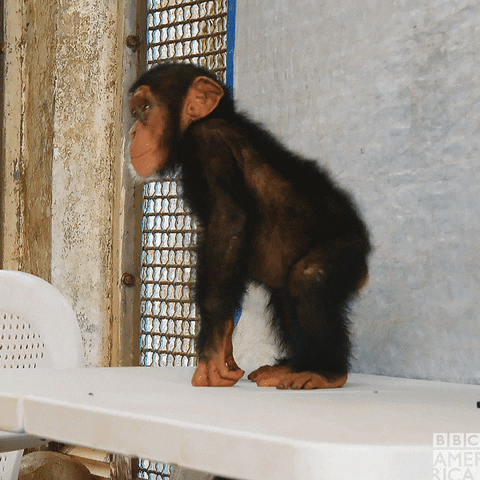Sport As My Teacher: Introducing Capacity
A Preface to Training Work Capacity as Conditioning for Grappling Sports
Arguably, (work) capacity has the biggest carry over to combat sports compared to endurance and strength. Combat sports, specifically grappling, are often referred to as “repeat sprint sports” (ref.). That means that the pacing is not consistent (e.g. LISS and true endurance work). By the same token, a given round or bout is substantially longer in duration than single maximum contraction (e.g. one-rep-max).
Although all three energy systems (aerobic, anaerobic-lactic / glycolytic, anaerobic-alactic / phospholytic) are being used all the time, it is worth investigating the following:
How much does each energy system / mode of fitness contribute to my specific sport?
Which fitness attribute (strength, endurance, capacity) do I personally struggle with the most?
Dan John refers to combat sports athletes as “Quadrant 2” athletes.
This makes training a bit more complicated than say a dedicated runner (who should run) or lifter (who should lift). Fighters, like military operators, need a diverse skill set and need to perform highly at each of those skills.
Speaking for myself, strength is not my problem (ref.). I can feel desire, the confirmation bias, pulling me to chomp further down the bit to achieve an arbitrary benchmark (such as the advanced tiers at strengthlevel.com).
But, I know part of this is rooted in avoidance. I’ve built an engine, now I have to carry it.
To keep myself accountable and answer the questions above:
Capacity training is the most relevant to grappling (expanded below).
My greatest deficit is in endurance work.
My capacity work lags significantly behind my strength.
Many readers, like myself, are wanting to push ourselves to the limits of what we’re capable of and constantly redefine such limits. At the same time, most of us have full time jobs.
So, programming and effective training plan may look quite different than a theoretical ideal. For example, I should be doing some maintenance endurance work all year round, and adding a heavy strength session once per week even when I’m “focusing” on capacity work two or three sessions per week.
The above looks pretty good, if “fitness” is my sport; but somewhere in there I still need time to grapple (or run plays if you’re in to ball-sports). So, we’re left with a question, not of what’s important to include, but:
What’s so important that we can’t afford to leave it out.
What does research say about grappling conditioning?
Obviously, strength-to-weight ratio is important in combat sports. As such, one’s body mass has to be useful. Fat is not and excess muscle isn’t either — a point we’ll cover / question later.
A 2011 journal noted that Olympic judo players and wrestlers had a mean body fat percentage of 15.2% - 22% for women and 7 - 13.7% for men (ref.). Additionally they noted that:
"Although maintaining a sufficient V̇o2max is important for grapplers, V̇o2max does not appear to be a major discriminating factor between athletes of different caliber"
In terms of energetics, effort : pause ratios look something like (ref.):
BJJ: 6:1 (six minute rounds with 1 minute rest)
Judo: 2:1 - 3:1
Wrestling: 2:1
It should be noted that those ratios are indicators of round length, not necessarily indicative of the output / work rate within a given round.
Final resting heart rates for BJJ matches at 7 - 10 minutes were 165 - 182 BPM. Obviously, having a solid endurance / aerobic foundation would be beneficial to keeping resting (and therefore working) heart rate low, so there’s a slight conflict with the previous reference.
72% of the energy turnover in the anaerobic (without oxygen) portion of BJJ matches was contributed by a glycolytic component (intramuscular sugar) (ref.). That is in contrast with phospholytic system (strength).
A 2018 study (ref.) found that the “match predictability in technical-tactical variables” for metabolic fitness (capacity) was 31% and 53% for BJJ and judo respectively; while neuromuscular fitness (strength) was 73% and 44% for BJJ and judo respectively.
This means you can compensate for inefficient technique more with strength in BJJ and more with fitness in judo. It seems strength does matter after all.
How strong is too strong?
At the second ADCC North American Trials in 2022, both the 66 Kg and 77 Kg divisions had a full 256 competitors scheduled for 10 minutes of regulation grappling in each round. That means that if each round goes to a decision and you make it to the finals, you’ve spent over 2 hours grappling.
Obviously, then, endurance is important. At the same time, if you get submitted in the first 30 seconds of the first round, that’s it, go home — none of that endurance matters.
So, while endurance is important, it seems to be the least important of the three physical modes as far as grappling is concerned. However, it could still be a limiting factor in one’s work capacity (what most fighters mean when they say conditioning), but there are ways to test this (below).
That brings us back to strength. At some point you are fighting genetics in terms of pound-for-pound lifts or strength-to-weight ratio. That means to get stronger in an absolute sense, you will eventually need to gain mass — if you want to lift a Volkswagen it helps to be roughly the size of a Volkswagen.
In the literature reviewed above strength appears to be important at about a 1 : 3 ratio with work capacity (think in terms of “holding tension” / “metabolic conditioning” to use popular nomenclature).
These ratios could last 5 minutes (for IBJJF white belts) to 10 minutes (for IBJJF black belts) to 40 minutes (for ADCC finals), or even no time limit (for superfights and special events). At what point does a 40 minute match go from work capacity to endurance?
It’s a trick question because all three energy systems are working all the time. So, to better answer this question we can look at limiting factors within work capacity:
oxygen mobilization (regulating intensity)
movement efficiency (mobility)
recoverability (repeat sprints)
Physiologically a lack of efficiency makes one more dependent on “strength” / holding. If the deficiency is severe enough O2 mobilization will be required — “it’s taking more effort and oxygen to do things inefficiently”. If such efforts are repeated, then recoverability becomes a concern.
Strength would test an opponent’s O2 mobilization (think the damper on an erg machine), but efficiency will soften that load, and recoverability will test the will of the strength application (machine’s don’t perceive their fatigue so the Assault Bike makes a relentless opponent).
Getting started where you’re at:
Academically, I’ve answered the question:
What facet of physicality is most relevant to grappling?
Then answer is work capacity. A few other questions need answered:
What specific time frame allows the most “spill over” to my sport?
Where do I individually suck the most (within a capacity frame)?
Sport Specific Spill Over:
Nonprophet’s manual estimates 7 - 15 minute capacity sessions as having the greatest ROI for sports. That’s a pretty broad range, but consider:
Amateur Boxing Rounds: 3 x 3 minutes (1 minute rest) = 11 minutes
American Football: 15 minute quarter / 2 teams = 7 minutes
Professional MMA: 3 x 5 minutes (1 minute rest) = 20 minutes
Professional Hockey: 20 minute periods
High School Wrestling: 3 x 2 minutes
High School Basketball: 8 minute quarters
College Basketball: 20 minute halves
IBJJF Grappling: 5 - 10 minute matches
ADCC Grappling: 10 - 20 minute matches (non-finals)
Where do I suck / need the most work?
Exploring general movement limitations is something I’ve talked about before with novice athletes benefitting greatly from moving their bodies through atypical (and simultaneously multiple) planes — e.g. crawls, climbing, tumbling, jumping, etc.
This can be addressed / progressed with more complicated movements like the following:
squat
sprawl
burpee
burpee + box jump
burpee + pull up
burpee + pull up + box jump
burpee + pull up + box jump + dive roll (parkour anyone!?)
To develop limitations, consider cultivating (or playing) with that movement pattern; where the emphasis is on pushing through what’s uncomfortable — breadth over depth. On the other hand build sessions dive deep into exploring a given limitation.
In spite of the obvious work : rest ratios of combat sports given with in a given bout (which may have multiple rounds); rounds to not have a consistent pace within them — e.g. it’s a mistake to train for a 6 minute match by jumping rope for 6 minute rounds and think you’re developing work capacity.
Training loads < 30% 1RM are suitable for creative endurance training while loads of 40% - 70% 1RM will be suitable for muscular fatigue (O2 mobilization), and loads greater than 70% 1RM will target the central nervous system (CNS) (recoverability).
Pick a load and one of the following intervals to work with:
2:1 - be warned, this will cause subconscious throttling and compensation, don’t choose it.
1:1 - this is a good starting point.
1:2 - this will allow for higher loads
1:5 - Nonprophet identifies this as the limit for “repeatable efforts”
Once you find out where the wheels fall of, you can start pulling different levers (load or rest ratio) to develop a given attribute. If 1:5 at 80% 1RM feels easier than holding 50% max watts on an Assault Bike, then your weakness is O2 mobilization — this is me btw.
The opposite would indicate needing work in recoverability from intense (>75% 1RM or max watts) efforts.
Putting it together:
Choosing a “path” from the manual:
Specialist: Requires “acute awareness” of one’s deficits in addition to 3-4 training sessions / week to address one of those deficits, plus maintain other attributes — this is not me.
Novice: Has the goal of “advancing underdeveloped areas.” For me, I know this is O2 Mobilization. This is a reasonable commitment while maintaining sport practice.
Newbie: Has the goal of developing sensitivity to personal deficits (done) and sport specificity (still in question).
I would place myself between the Newbie and Novice levels as I know what my personal deficit is, but I’m not sure about movement limitations (pertaining to sport), or which facets of work capacity (recoverability or O2 mobilization) are more relevant to grappling. So, those later questions need answers “cultivated.”
Some areas of my movement are really good, but “sports related injuries” are often uncorrected overcompensations due to overuse — walking like a primate with a rounded back, bad ankles and tight hamstrings because of thousands of hours grappling.
Programming for myself:
Session 0: Pre-Test O2 Mobilization
Session 1: O2 Mobilization (build)
Session 2: Movement Limitation (cultivate)
Session 3: Recoverability (build)
Session 4: O2 Mobilization (build)
Session 5: Movement Limitation (build)
Session 6: Recoverability (cultivate)
Session 7: Post-Test O2 Mobilization
If fail: repeat build process
If passed: test recoverability and repeat process
Stay tuned for my final review of the program / manual process in about 6 - 8 weeks!









